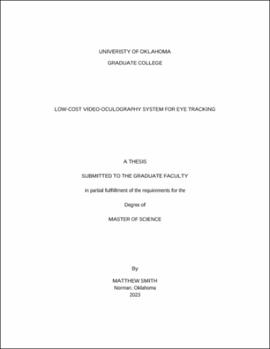| dc.description.abstract | The vestibular system plays a critical role in balancing and the vestibulo-ocular reflex (VOR), which aids in maintaining visual stability during head movements. Current methods of vestibular research rely on scleral coils and video-oculography (VOG) with markers. These processes are potentially damaging to the test subject and painful. A comfortable non-invasive procedure is VOG without the use of markers. However, this option foregoes the accuracy of the others. A machine learning approach was explored to see if this gap in functionality could be closed. VOG is a visual-based technique of measuring eye movements. This method is used in vestibular and oculomotor research and medical diagnosis involving vertigo and stroke. A Machine Learning system was developed by training object-detection models from TensorFlow with a headset fabricated for this project. The horizontal/vertical movements were tracked by recording the model’s bounding box. From the bounding box, the center of the pupil can be derived via the geometric center. The location of the pupil center is used to calculate the angular velocity of the eye. A 3d-printed headset was fabricated to test the system using a gyroscope, raspberry pi, button light, and camera. The headset’s rotational data collection is processed along with the images captured. The rate of error was calculated to be more than scleral coils, although a more thoroughly trained model could be able to reduce error. The pupil miss rate limits the accuracy but using a higher speed and resolution camera will ameliorate the problem. A machine learning process was explored for the use of vestibular-ocular research in 2D. A low-cost headset was fabricated as an alternative to the current methods which are significantly more expensive. | en_US |
